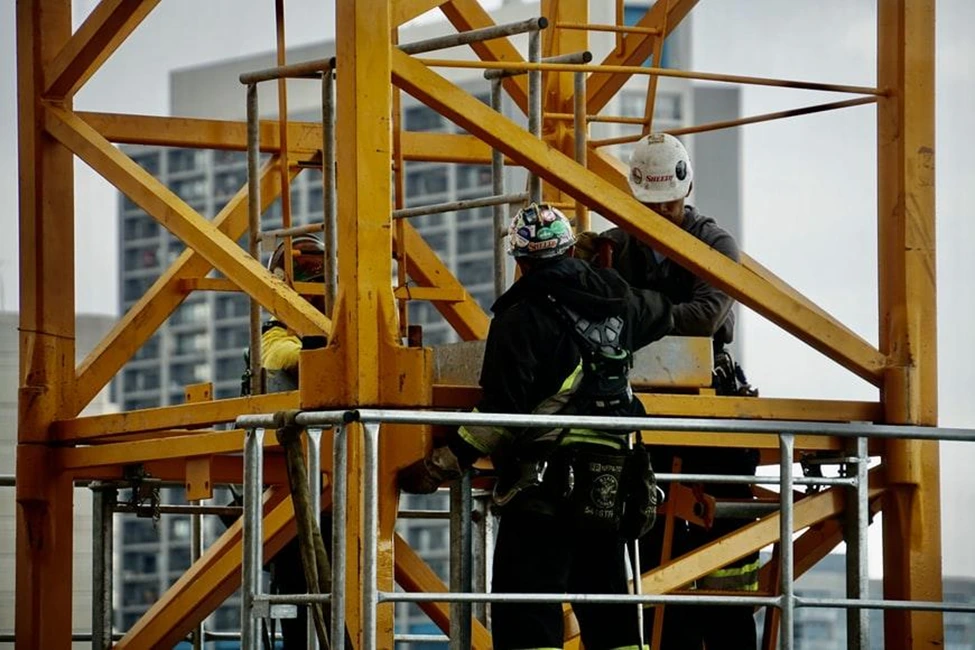Knowing the different kinds of access platforms is important in planning the efficiency of your operational workflow. It will help you choose the best one that will suit people’s daily tasks and needs. It will also help you choose one that will bring more value to your money. Access platforms are extremely important as they allow ease in work even when done in varying heights. You should choose one that can perfectly provide support day-in and day-out. To help you in your industrial choice, we will enlist and explain the four main kinds of access platforms and their usage.

Know the Different Kinds of Access Platforms and their Usage
1. Folding Platforms
If you know how a ladder works, then you know how a folding platform works. The main difference is that folding platforms are safer and sturdier. Folding platforms are safer because they’re like ladders but with large platforms on top. Such large platforms make working safer, easier, and faster. Individuals will have an easier time working in heights as they’d be able to easily move and maneuver.
Folding platforms can easily move from one place to another. Their height can also be easily adjusted. Folding platforms used in open construction normally don’t come with rails. But ones that are used on extremely elevated spaces always come with enclosures and guard rails to bolster ease and safety while at work.
2. Stationary Platforms
Stationary platforms are mostly used in warehouses and construction projects with elevated spaces. They are extremely sturdy and safe as they don’t move from one place to another. They permanently stay in one work area where much elevated work is required. Stationary platforms come with locks and fixed tools for sturdy installation and placement. As they are compatible in workspaces with defined operational tasks, they are often highly customized. Warehouses with hard-to-reach elevated areas always have stationary platforms. Plane manufacturers have numerous stationary platforms for ease in assembling and routine inspection. If your operational workflow is distinct and not ever-changing, investing in a stationary platform will be best for you. If you have particular workflow needs, you should consider working with a good access platform engineering firm that can customize tools for you.
3. Semi-stationary Platforms
Semi-stationary platforms are niftyaccess platforms because they are sturdy but significantly easier to move from one place to another. They work perfectly in fast-paced spaces where much movement is required. As semi-stationary platforms are movable, they usually come with guardrails and added safety features. Semi-stationary platforms usually have one or two of their sides open to allow for easy access during work. Semi-stationary platforms are best used in reaching movable storage bins, watercraft, and offload cargo. They can also be conveniently used to gain access to towers and elevated command centers for communication and surveillance.
4. Powered Platforms
Powered platforms are highly advanced because they can easily be adjusted to the will of individual workers as they do operational tasks. They come with solid platforms that allow for long hours of safe work in elevated spaces. With powered platforms, individuals can easily move from one level of height to the next in a secured manner. As powered platforms can be easily moved horizontally and vertically, they always come with guard rails for solid security and safety measures. Invest in a powered platform if you are certain that you’d be using one daily. They are not affordable so it’s best that you only avail of one if your work will truly require daily usage. If your workplace rarely needs to use a powered platform, it’s best to just rent one.
The following are the most popular and commonly used powered platforms:
a. Cherry Pickers
Cherry Pickers are favored by users in workplaces who prefer fast task turnover and movement. It has workers safely placed at the tip of a crane that can speedily move in different directions. Cherry pickers can move in different directions so they’re often used for maintenance, repair, and inspection purposes. Heavy equipment is often repaired by engineers in cherry pickers.
Cherry pickers can also get into tight elevated spaces. Any dynamic industrial workplace will benefit much by utilizing cherry pickers daily.

b. Scissor Lifts
Scissor lifts are less dynamic than cherry pickers. They can only move lower or higher. They’re best for workplaces that simply need access to non-tricky elevated spaces. Scissor lifts are commonly used by repair crews and maintenance people who clean buildings. Most warehouses have numerous scissor lifts for easy access to stored items in elevated areas.
A scissor lift will be perfect for you if you have no special need to access tricky elevated spaces. Scissor lifts are more affordable than cherry pickers. They can also easily support long hours of safe work in elevated spaces so investing in one will be ideal if your workspace has generic and basic needs. You will only need to invest in a cherry picker if your workspace entails reaching extremely tricky and high spaces.
c. Electric Hoists
Electric hoists come with a dynamic pulley system that simplifies access platform work. Long hours of work on scaffolding is easy with the support of electric hoists that can separately carry tools and materials. Electric hoists are nifty because they avoid delay when working in elevated spaces. With one, individuals always have easy access to all tools and materials that they need. They need not go down to reach for any item as all that is necessary can be easily placed in electric hoists. Electric hoists significantly speed up work in elevated spaces.

